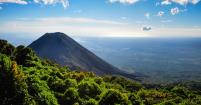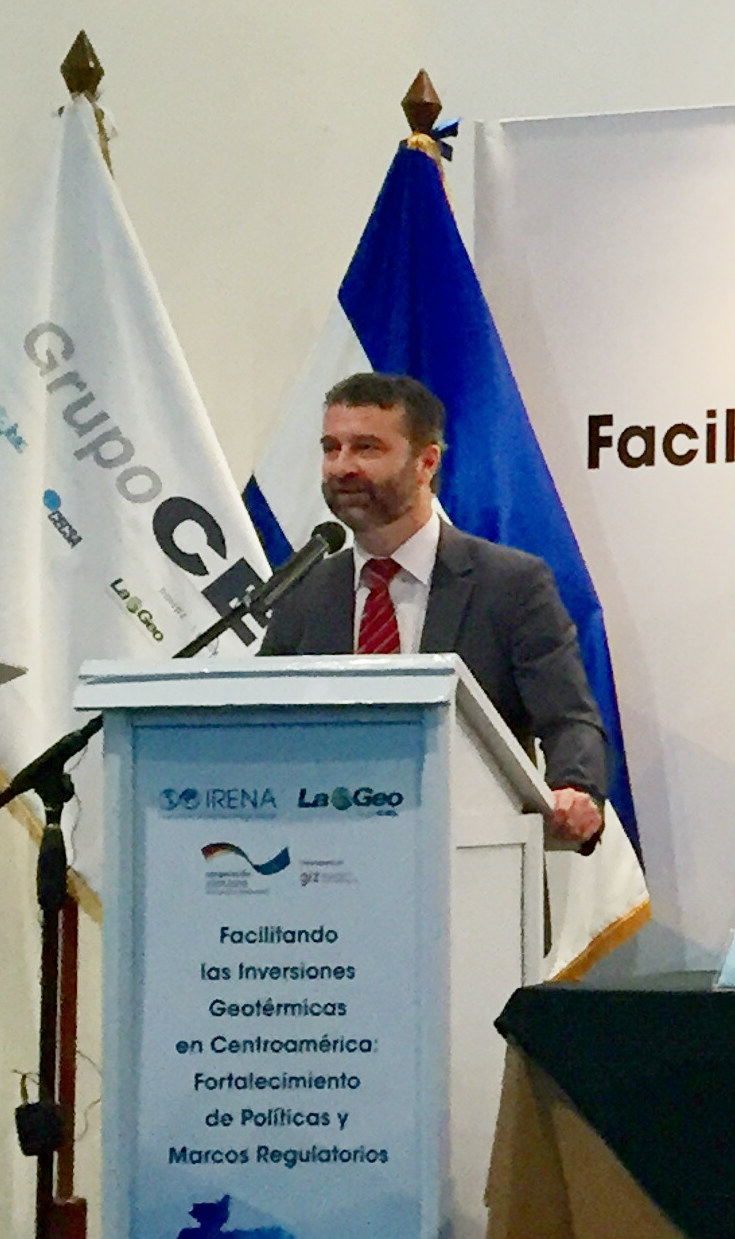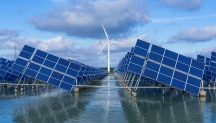

Geothermal, a Hot Topic in El Salvador
Newsletter
Central American countries seek to bring geothermal to the forefront of future energy development plans
1,500 kilometres long, Central America’s volcanic arc consists of hundreds of volcanoes — from sky scrapping stratovolcanoes like Guatemala’s 4,202 metre Volcán Tajumulco, to crater lakes like El Salvador’s Ilopango — the very ground of this ocean-separating, continent-connecting, ribbon of land, moves.
The region’s unique geothermal activity is the result of what geologists call subduction: one tectonic plate, the Cocos Plate, moving under others, the Caribbean and North American plates, forcing earth, magma, and heat to the surface. While this does result in life-threatening earthquakes and volcanoes, the geothermal heat released provides a largely untapped energy that the region’s countries are now resolved to harness.
Realising full potential

IRENA Acting Director of Country Support and Partnerships, Gurbuz Gonul, says geothermal energy can help Central America secure and deliver, inexpensive electricity while stimulating low-carbon economic growth.
“Central America holds some of the world’s most promising geothermal resources, that if utilised can help the region secure and deliver, inexpensive electricity while stimulating low-carbon economic growth,” said Gurbuz Gonul, Acting Director of Country, Support and Partnerships at IRENA, on the occasion of the first Regional Geothermal Workshop in Central America last month.
Taking place in El Salvador, and organised by IRENA and LaGeo (El Salvador’s state-owned geothermal electricity producer), and in association with Deutsche Gesellschaft für Internationale Zusammenarbeitis (GIZ), this workshop of regional governments sought to identify the measures that may unlock their vast geothermal potential.
“Through the sharing of knowledge, experience and lessons learned from the leading geothermal countries in Central America, this workshop will help establish the building blocks for the stable, long-term policy framework needed to overcome barriers in geothermal development,” added Gonul.
If El Salvador and other Central American countries were to realise their full geothermal energy potential, they would be able to double their current generation of renewable electricity by 2020, says IRENA Senior Adviser Vanessa Interiano.

IRENA Senior Adviser, Vanessa Interiano, speaks about geothermal energy potential in El Salvador.
“Ambitious national commitments, international agreements and rapid technological progress have prompted countries to increasingly turn to renewable energy to expand their power infrastructure,” says Interiano, “But the variability of solar and wind energy presents challenges for grid integration and stability. Countries in Central America are now rightly recognising geothermal energy as a sustainable alternative to variable renewables.”
IRENA estimates that globally geothermal potential ranges in the region of 200 gigawatts (GW). But at the end of 2016 global geothermal power capacity totalled at just 12.7 GW — only 0.3% of global electricity generation.
In Central America geothermal power generation has increased nearly five-fold since 1990, most notably in El Salvador, the country with the second largest geothermal generation share after Iceland, and in Costa Rica.
“El Salvador generates a quarter of its total electricity from geothermal sources and it still has more geothermal potential to exploit,” says Interiano. It has been estimated that El Salvador still has over 600 megawatts of untapped geothermal resources, that if utilised could expand and enhance the clean energy share of the country’s energy matrix.

International Geothermal Association Association President, Alexander Richter, spoke at IRENA’s first Regional Geothermal Workshop in Central America.
There are not many countries in the world where geothermal plays such an elementary part of a country’s electricity supply like El Salvador. With plans to push the overall share to 40% with additional geothermal projects, El Salvador is taking a remarkable leadership role beyond Central America,” says Alexander Richter, President of the International Geothermal Association.
IRENA calculates that geothermal power could satisfy nearly double the region’s predicted electricity demand through 2020, but geothermal expansion in the region is hampered by several barriers, including a lack of adequate policies and regulations for the use and development of geothermal resources.
To address this, IRENA has launched a regional capacity building programme in Central America under the Global Geothermal Alliance — a multi-stakeholder initiative aimed at accelerating geothermal energy deployment and development. The capacity building programme supports the development of capabilities of various stakeholders along the geothermal value chain in Central American countries.




